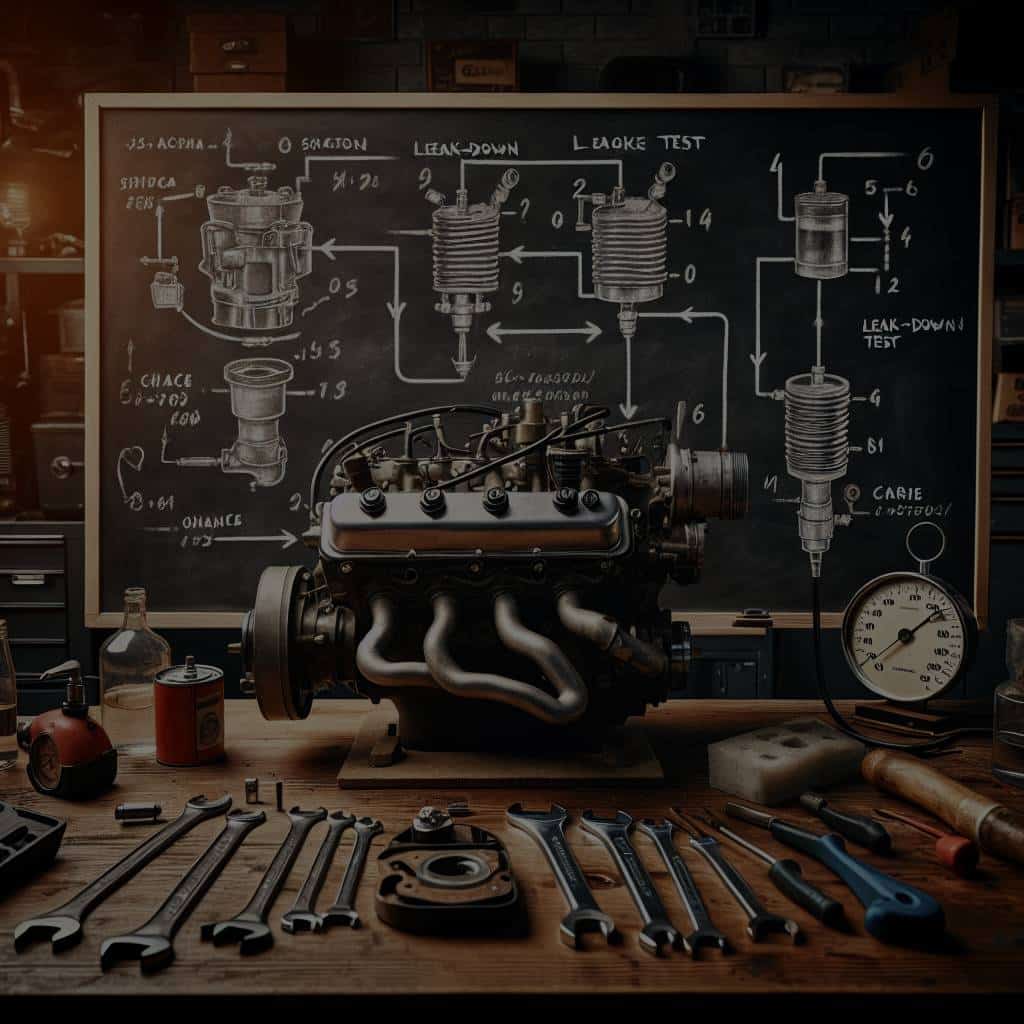How to Perform a Leak-Down Test on a Vintage Car Engine?

For vintage car enthusiasts, preservation of the classic machine’s performance is essential. One such vital task is the leak-down test, a way to check the engine’s health by assessing the compression in the cylinders. This test is critical in detecting engine issues, such as leaks or worn-out parts, that might otherwise go unnoticed. This guide will equip you with the knowledge and understanding to perform a leak-down test on a vintage car engine proficiently and accurately.
Understanding the Basics of a Leak-Down Test
Before we delve into the process of conducting a leak-down test, it is essential to grasp the basics of this testing method. A leak-down test is an engine diagnostic tool used to check the amount of compression leakage in an engine’s cylinders. It measures the rate of leakdown, or how quickly pressure escapes from the cylinders, which can suggest issues with the engine’s valves, rings, and head gasket.
Also read : Can a High-Output Fuel Pump Improve the Performance of a Turbocharged Lexus ISF?
A leak-down test primarily involves pressurizing each cylinder with air and gauging how much of it leaks out. By performing this test, you can assess the condition of the engine without having to disassemble it fully. It can offer insight into issues with the cylinder heads, valves, and piston rings, among others. For instance, if the test reveals a high leak-down rate, it may indicate worn-out piston rings or valve seats, thereby providing a crucial heads up before any severe damage occurs.
Essential Tools for Leak-Down Test
To carry out a successful leak-down test, having the right tools at your disposal is imperative. The primary tool you will need is a leak-down tester. This piece of equipment typically comprises two pressure gauges: one to set the input pressure (usually at 100 PSI) and the other to read the amount of leakage.
Also read : How to Adjust the Valve Lash on an Old School Muscle Car?
In addition to a leak-down tester, you’ll need an air compressor capable of supplying at least 100 PSI of pressure. A piston stop tool will be required to bring each cylinder to Top Dead Center (TDC). You’ll also need common hand tools to remove the spark plugs, and a reliable source of compressed air.
Remember, safety is paramount. Always wear protective eyewear and gloves when working with engine components. The tester and its hoses should be in good condition and regularly inspected for wear and tear.
The Procedure for a Leak-Down Test
Now that you’re equipped with the necessary tools and a basic understanding of the leak-down test let’s proceed to the actual procedure.
Start by warming up the engine. A warm engine will ensure that all components are at their operating size. Then, remove all the spark plugs from the engine.
Using the piston stop tool, rotate the engine manually to bring the first cylinder you are testing to its TDC on the compression stroke. This position ensures that both intake and exhaust valves are closed, allowing for accurate testing.
Next, connect the leak-down tester to the air source and adjust the regulator to read 0% leakage. After this, connect the tester to the spark plug hole of the cylinder at TDC. The reading on the tester will then indicate the percentage of compression lost in that cylinder.
Take note of the reading for that cylinder, then repeat the process for each cylinder, always remembering to adjust each to TDC before testing.
Interpreting the Leak-Down Test Results
Finally, understanding the results is just as important as conducting the test. The readings from the leak-down tester will provide an indication of the engine’s health. A cylinder that holds pressure well (leakage of 10% or less) generally indicates a healthy engine.
However, if the leak-down tester reveals a higher percentage of leakage, it’s indicative of a problem. Leakage over 20% is considered excessive and will require further investigation.
Listen for where the air is escaping to diagnose the potential problem. If you hear air coming from the intake, the intake valve might be leaking. Air escaping from the exhaust suggests a problem with the exhaust valve. If air bubbles appear in the coolant, it might be a head gasket leak, and if you hear air from the crankcase breather, the piston rings might be worn.
Carrying out a leak-down test on your vintage car engine is a responsible way to prevent significant engine damage and prolong the life of your classic vehicle. The process may seem daunting at first, but with practice, it becomes a straightforward task. Remember, regular maintenance and check-ups are the key to keeping your vintage car running smoothly for years to come.
Precautions and Measures During a Leak-Down Test
Undertaking a leak-down test involves a fair share of precautions and measures. These are essential to ensure accurate results and the safety of the vintage car’s engine. Remember, a leakdown test is not just about connecting and reading the leakdown tester; it’s about doing it correctly and safely.
Before plugging the compression tester into the spark plug hole, ensure that the cylinder is at TDC (Top Dead Center). Ensuring this position is crucial as it determines that both the intake and exhaust valves are closed, thereby allowing the tester to measure the cylinder’s leak rate accurately. Always double-check that the cylinder is at TDC before proceeding with the test.
Another critical precaution during the leak-down test is to carefully listen for air leaks. When pressurized air is forced into the cylinder, it will find its way out through any present leaks. Listening attentively can give you clues on where the leakage might be. For instance, if you hear the air escaping from the intake manifold, you might have a leaky intake valve. Similarly, if the air is escaping from the exhaust, you may have a leaky exhaust valve.
While performing the test, never rush. Take your time to conduct the test on each cylinder, ensuring you get accurate readings. Hasty checks can lead to misleading results and can leave underlying issues undetected.
Conclusion: Importance of Regular Leak-Down Tests
In the journey of vintage car maintenance, regular leak-down tests hold a pivotal role. These tests are a non-invasive way to keep a tab on the engine’s health, ensuring that it continues to operate at optimum performance. It can detect issues such as cylinder leak, valve leak, worn out head gasket, and more, which might otherwise go unnoticed until significant damage is done.
Remember, a vintage car engine is a precious piece of machinery that has weathered many years. The engine components, including the spark plug, intake valve, exhaust valve, head gasket, etc., have endured wear and tear for years ago. Thus, conducting regular leak-down tests can help you detect and rectify issues before they escalate into major engine problems.
The procedure of a leak-down test may appear complicated initially, but with time, it becomes a routine task much like how a thread starter becomes familiar after a few uses. It is a tool in the arsenal of vintage car enthusiasts, allowing them to preserve the charm and reliability of their vintage vehicles.
In conclusion, regular leak-down tests are a small investment in maintaining your vintage car’s performance and longevity. By detecting issues early, you not only save on costly repairs but also ensure that your classic vehicle stays on the road, turning heads for many more years to come.
